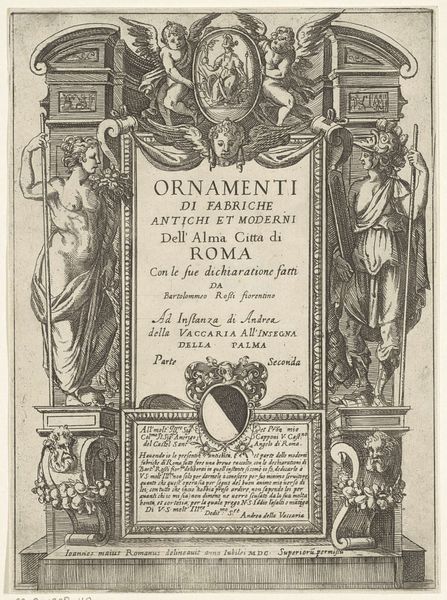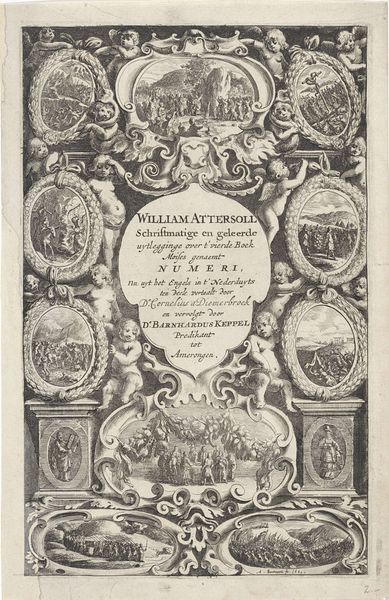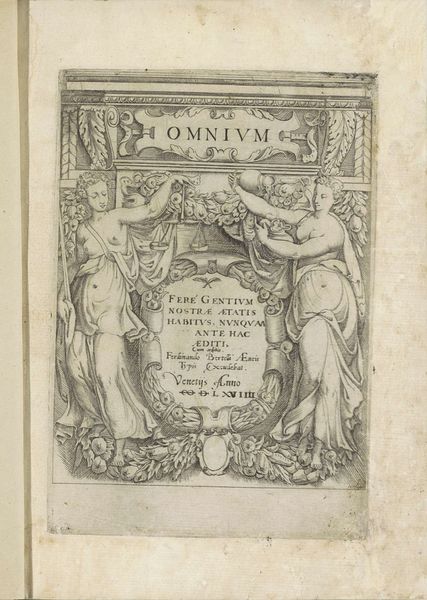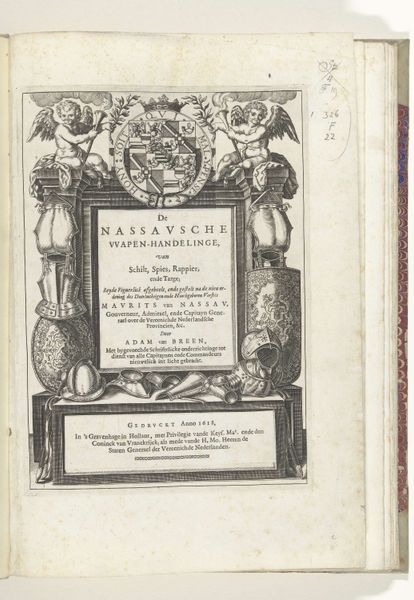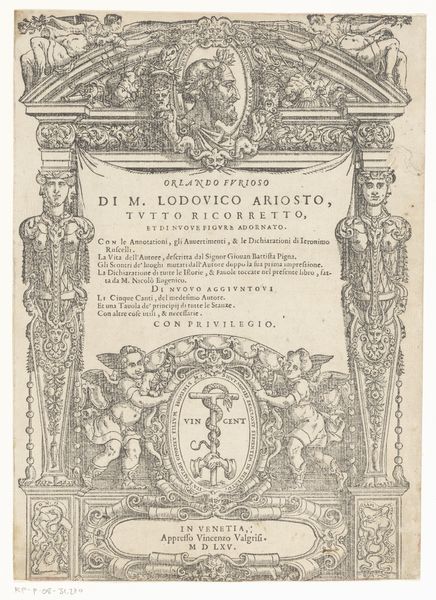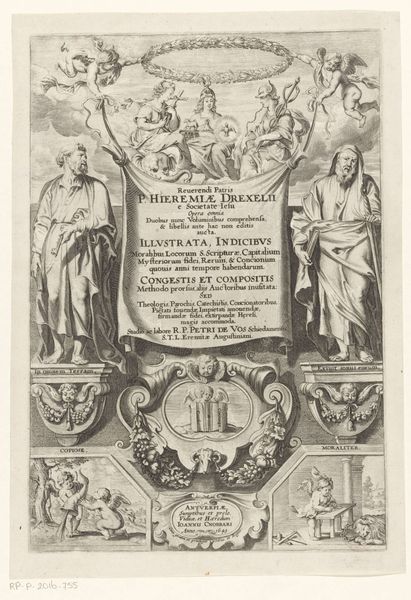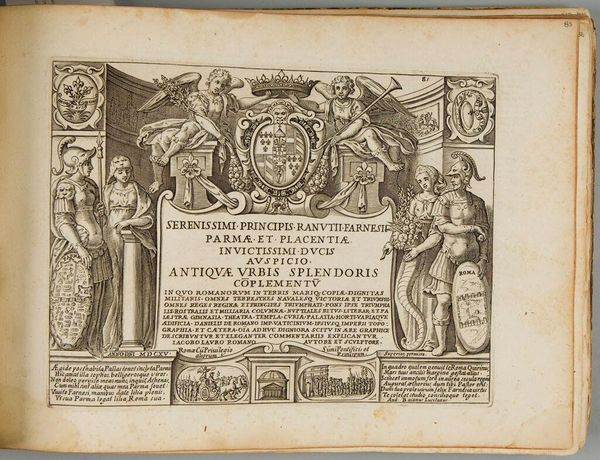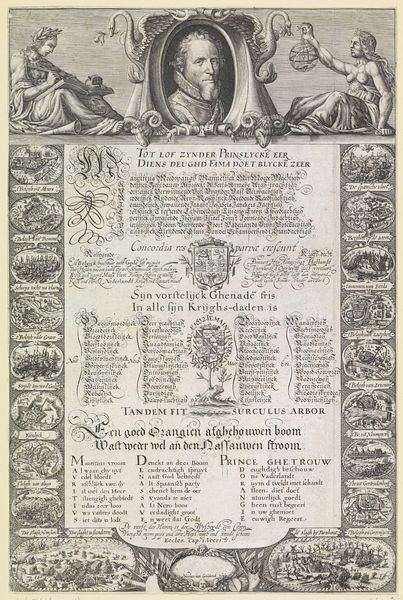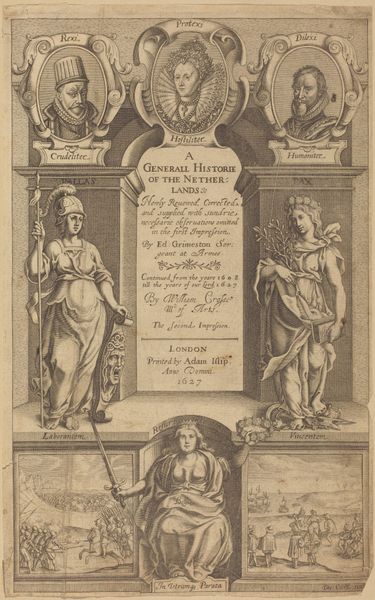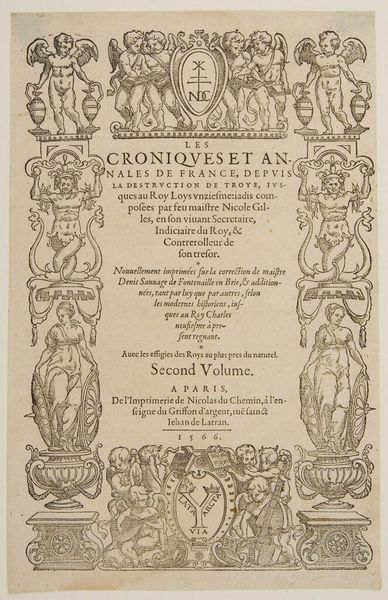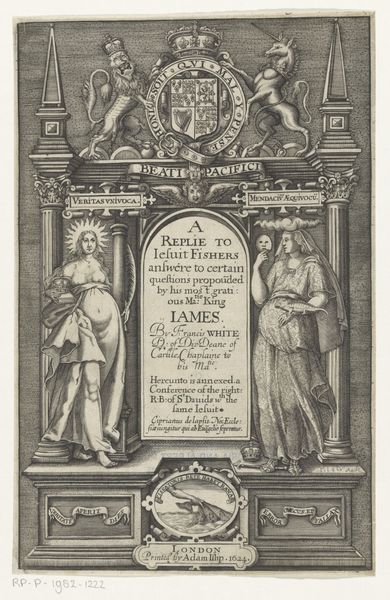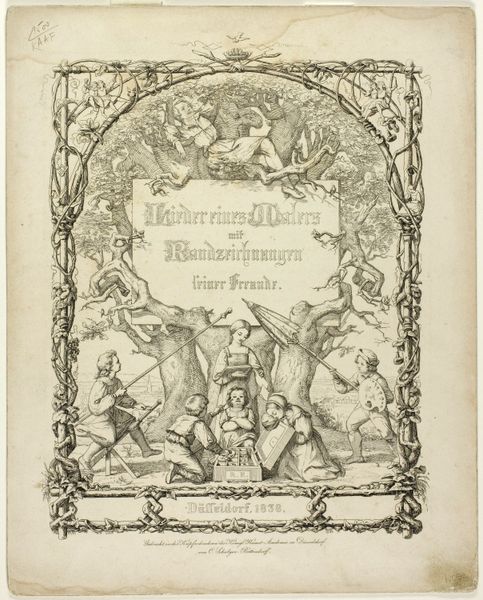
drawing, print, ink, engraving
#
drawing
#
allegory
#
pen drawing
# print
#
mannerism
#
ink
#
engraving
Dimensions: height 213 mm, width 157 mm
Copyright: Rijks Museum: Open Domain
Curator: This pen drawing, etched with ink and engraved onto the print, dates between 1576 and 1618 and is titled "Titelprent met allegorische figuren en putti." Giovanni Maggi is credited as the artist, and we find it here at the Rijksmuseum. Editor: Right, an overwhelming composition! It immediately feels heavy, with those robust architectural frames weighing down the central text. You sense an intended gravity through the allegorical figures, don't you? Curator: Absolutely, and look at the elaborate nature of the engraving itself. Maggi painstakingly uses line work to build up shading and texture. This wasn't merely a reproduction process, but an act of skilled labour contributing artistic value. Editor: Indeed, this piece reveals a great deal about the cultural appetite for imagery during the late 16th and early 17th centuries. "Ornaments of ancient and modern buildings of the city of Rome..." tells us there was this fascination with the city as a seat of power and historical grandeur and those cherubic figures contrast the heavy framework, creating some appealing dynamic tension. Curator: Precisely, and consider who would commission and consume this. A wealthy elite, surely. Prints such as this, disseminated widely, served a crucial role in solidifying Rome's cultural and political standing across Europe, they show that consuming architectural ideas of Rome could take place everywhere through this medium. Editor: Which is so fascinating, given how Mannerism – the prevailing style at the time – actively sought to challenge conventional perceptions of perspective and proportion. Those figures seem almost crammed within their frames. Curator: That tension, I think, underscores Mannerism's pursuit of complexity over perfect harmony. By exaggerating the visual elements and overloading it with details, Maggi elevated the engraving from functional reproduction into something that approached an art object. Editor: Well, thank you for sharing this insightful materialist reading. The detail in Maggi’s choices shows this work in a new light. Curator: It seems that situating this piece in its time through an engagement with labour has, for me, enriched the piece even further.
Comments
No comments
Be the first to comment and join the conversation on the ultimate creative platform.
